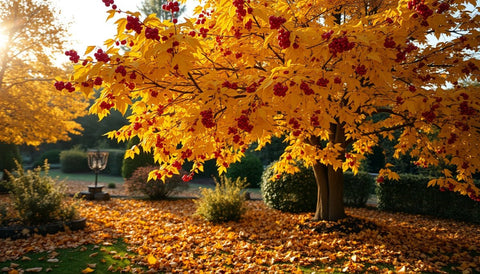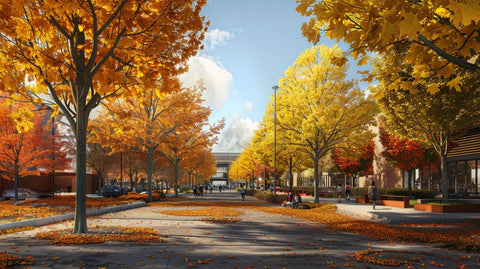A comprehensive guide to planting and maintaining hawthorn trees for a beautiful autumn landscape.
Introduction
Hawthorn trees (Crataegus species) are a popular choice for enhancing landscapes, especially in the fall. Their vibrant foliage and colorful berries make them an excellent feature in autumn gardens. In this post, we’ll explore the significance of hawthorn trees in landscaping and provide a detailed guide on planting and caring for them to ensure a stunning fall display.

Section 1: Understanding Hawthorn Trees
1.1 Overview of the Hawthorn Species
The hawthorn tree belongs to the Crataegus genus, known for its hardy nature and diverse species. With over 200 varieties, hawthorns offer unique features such as thorny branches, attractive foliage, and red or orange berries that persist into winter.
1.2 Benefits of Planting Hawthorn Trees
- Aesthetic Appeal: Hawthorn trees provide vibrant fall foliage in shades of red, orange, and purple, complemented by clusters of colorful berries.
- Wildlife Habitat: The trees offer food and shelter for birds and small animals, creating a lively ecosystem in your garden.
- Soil Health and Environmental Benefits: Their deep roots help with soil stabilization, preventing erosion and promoting healthy soil structure.
Section 2: Choosing the Right Hawthorn Species
2.1 Popular Varieties for Fall Color
Some of the most popular hawthorn species known for their autumn beauty include:
- Crataegus monogyna: Common hawthorn, known for its rich red berries and golden-yellow foliage.
- Crataegus laevigata: Midland hawthorn, offering stunning red and purple autumn foliage.
- Crataegus viridis 'Winter King': A standout for its silvery bark and vibrant orange-red berries.
2.2 Climate Considerations
Hawthorn trees thrive in USDA hardiness zones 4-7. It's important to choose a species that matches your local climate to ensure optimal growth and fall color.
Section 3: Planting Hawthorn Trees
3.1 Ideal Planting Conditions
For best results, plant hawthorn trees in well-drained soil with a pH of 6.0 to 7.5. They thrive in full sun but can tolerate partial shade, especially in hotter climates.
3.2 Step-by-Step Planting Guide
- Selecting the right location: Choose a spot that allows for the mature size of the tree, typically 15-30 feet wide and tall.
- Preparing the site: Dig a hole twice the width of the root ball and just as deep.
- Planting: Place the tree in the hole, ensuring the root ball is level with the soil. Fill the hole and water thoroughly.
Section 4: Caring for Hawthorn Trees

4.1 Watering and Fertilization
Water newly planted trees deeply and regularly, especially during the first two years. A balanced fertilizer (10-10-10) can be applied in early spring to promote healthy growth.
4.2 Pruning and Maintenance
Prune hawthorn trees in late winter to maintain shape and remove dead or diseased branches. Regular pruning improves air circulation and overall tree health.
Section 5: Enhancing Fall Displays
5.1 Companion Planting
Pair hawthorn trees with shrubs like burning bush (Euonymus alatus) or Japanese maple (Acer palmatum) to enhance the autumn palette with complementary colors.
5.2 Landscape Design Tips
Incorporate hawthorn trees as focal points in mixed borders, or use them as standalone features near patios or along garden paths for maximum impact in fall.

Conclusion
Hawthorn trees are a fantastic choice for anyone looking to create a vibrant fall landscape. Their striking foliage, berries, and adaptability make them an excellent addition to any garden. Start planning your hawthorn tree planting today and enjoy a stunning fall display for years to come!
Call to Action
Interested in adding hawthorn trees to your garden? Check out our selection of hawthorn trees and get started on your fall display. Don't forget to subscribe for more gardening tips and share your experience with us on social media!































Comments (0)
There are no comments for this article. Be the first one to leave a message!